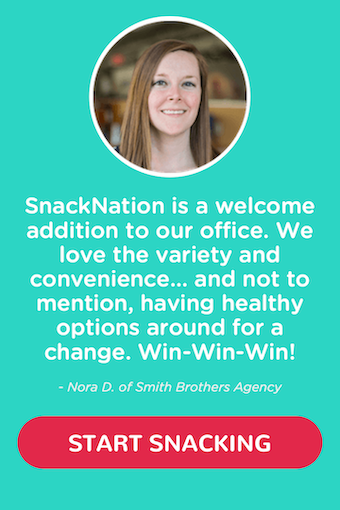
Engagement is more than just the hoped for result of dating site denizens and contestants on The Bachelor, it’s a key differentiator that leads to business success in companies across all verticals.
And similar to the variety of dating sites like Match.com, Bumble and OK Cupid, more and more employee engagement platforms are flooding the market, offering relief to companies seeking to address major business challenges.
One thing that remains universally important in maintaining employee engagement (in both relationships and software platforms) is recognition. When done with purpose, employee recognition is the engine that drives employee engagement; it provides a highly visible, tangible way to ensure your employees are appreciated for their contributions while at the same time reinforcing key company values.
With employee engagement declining for the first time in five years, it’s more important than ever for organizations to understand how they can use recognition as the underpinning of a successful engagement initiative. But even more important is understanding, how companies can use engagement to address specific business objectives. With that in mind, I have provided some specific guidance below:
Creativity Creates Company Culture
Focusing on company culture comes first, and with good reason. Nothing else I will suggest from here on in is possible unless your business has a culture that will attract and engage high-performing employees. Culture is the essence of an organization, it is a reflection of the values your company hopes to be defined by. And with the rise of company review sites such as Glassdoor, it can be the determining factor in how the world at large views your company.
77% of employees tie engagement to workplace relationships with co-workers, so a positive workplace culture isn’t just a bonus; it’s mandatory. One of the best ways to create a positive corporate culture is to encourage frequent recognition. Recognition makes both the recognizer and the recognized feel good and a creatively personalized recognition can do wonders in cultivating a fun and appealing environment.
There are a variety of ways to personalize a recognition, framing it in a way that is most meaningful to the recipient. As the recognizer, you have the ability to inject some lightheartedness or gravity to a specific instance of praise, and show the recognized that you appreciate their efforts on a truly personal level.
It might be a highly personalized message to the recipient, touching on factors critical to the success you are recognizing. Or perhaps you include a funny photo or video, (everybody loves goofy cat videos), that reinforces the gist of a recognition. However you choose to recognize a colleague, make sure to include a personal touch. It will resonate with the recipient long after the recognition is given.
I can readily recall my favorite recognition moments from the colleagues that I hold in high regard, not only because I remember the actions that led to it, but in part because of the personal nature of the message.
Hip hop, Oakland sports teams, literature; by using these references when offering praise for something I accomplished, my colleagues are indicating that they understand me and my interests outside of work, moving past the perfunctory and signaling an appreciation for me as an individual.

Above, I have included one of my favorite recognitions that received last year. It adheres to all the criteria I set forth above: timely, personal and specific. Knowing my co-workers care about me beyond the walls of the office serves to motivate me to work as hard toward a goal and as a member of the team as they do.
This is what ensures I am ready and willing to tackle each work day with immediate and sustained enthusiasm—what engagement experts refer to as discretionary effort. A salary gets you in the office door in the morning, culture keeps you engaged all day.
Recognition Results in Retention
The war for talent is real. Any person with an internet connection and a solid resume can be considered for jobs around the world with the click of a button. Even if your company is lucky enough to land talented employees, keeping them is a whole other ball of wax. According to Gallup, only 33% of employees are engaged in their job meaning two-thirds of the workforce is possibly looking to leave a company for a new opportunity.
There are many factors involved when an employee is disengaged, but feeling underappreciated for their contributions can leave the individual employee not only disengaged but possibly disgruntled. Recognizing employees in a highly visible manner can go a long way towards keeping them engaged. It shows that as a leader, you give credit when and where it is due. And when peers recognize each other it shows that everyone’s contributions and insights are valued.
What if I told you that recognition is most effective when it happens immediately? You don’t need to swallow the red pill from “The Matrix” to understand that effective recognition should occur immediately upon attainment of a specific goal or the performance of a desired behavior.
Think about it; if you wait for an annual or semi-annual review to finally credit your high-performing employee for their successes, you might inadvertently lessen the impact of the recognition by not remembering all it took to reach the goal. Even worse, you might forget it all together.

By offering real-time praise to an employee you ensure your recognition is specific and references the exact behavior that you hope to highlight and encourage for the future. And it’s even better if you have an employee recognition platform that allows the commendation to be broadcast company wide, enabling colleagues to further applaud the recipient(s) of the recognition.
By setting an example that exemplary work will be praised regularly, immediately, specifically and positively, leaders are reinforcing characteristics and behaviors they would like all their employees to exhibit.
Praising Peers Permeates Productivity
Engaged employees exhibit more enthusiasm in completing business critical tasks because they have a willingness and desire to go above and beyond their normal duties for a company that values them. This is why engaged workplaces are 21% more productive than those that aren’t.
Of course, the flip side of this, disengagement, can have an astoundingly negative impact on productivity, even getting to the point in which it would be better to NOT to have the disengaged, unproductive employee in the office. Their gripes, negativity and willingness to distract others can bring down entire departments.
Often, when word of a frustrated employee finally reaches the ears of their manager, it’s too late to re-engage them. Perhaps a word of encouragement from a manager could have helped keep the employee engaged. But with loads of responsibility already on their plate, how are leaders supposed to keep track of all the effort an employee has given?
With large teams, it’s extremely difficult. However, there is a cure for this “recognition deficiency”.
Allowing colleagues to recognize one another, peer-to-peer, with both social (non-monetary) and monetary (rewards-based) recognitions, can help ensure that productivity and spirits remain high. Who better than the colleagues that regularly interact with a given employee to understand the value they are creating and recognizing?
[youtube id=”0Hau4CO0Jd0″ width=”600″ height=”350″ autoplay=”no” api_params=”” class=””]
The engagement effect here is further amplified when a company ties corporate values to recognition categories, allowing greater understanding as to the action that led to recognition and the repetition of the desired behavior through positive reinforcement.
Adding a “Boost” (one click-recognition) component to peer-to-peer recognition enables those short on time, such as the aforementioned managers and executives, to piggy-back on a given acknowledgement with a single click of a mouse.
There is no magic bullet to ensuring employee engagement remains consistently high. Even with the guidance I provide in this blog, there are many other ways to help create a company culture defined by engagement. As no two employees are the same, it will likely take a combination of initiatives to help sustain engagement levels.
Employee wellness (such as facilitating a “steps” challenge or offering your employees healthy in-office snacks), flexibility in work schedule (allowing employees to work when and where they are most comfortable) and development opportunities (mentorship programs, learning opportunities) are other cultural offerings your company can institute at a minimum of cost.
Regardless of the methods your company chooses to help foster and maintain engagement, the common core of these ideas is an emphasis on displaying to employees that they are the most valuable asset in the company and that the positive contributions they make are valued, no matter how massive or miniscule.







Interesting read – some good pointers
I fully agree with this. The tough part, I feel, is getting middle managers on board. How does a “nobody” provoke that change?